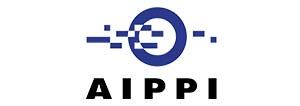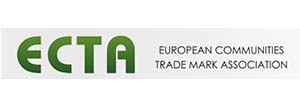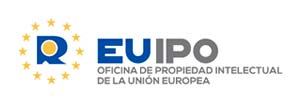FAQ
FAQs about Trademarks
What is a Trademark?
A TRADEMARK is understood to be any sign or means which distinguishes similar products or services by different companies in the market. A good TRADEMARK has distinguishing power and differentiating aptitude.
In particular, the following may be trademarks:
- DENOMINATIVE: words and combinations of words.
- GRAPHIC: Graphic symbols, logos, drawings, etc.
- MIXED: the combination of denominative and graphic elements.
- THREE-DIMENSIONAL: Three-dimensional shapes, including the packaging, containers and shape of the product.
- SOUND MARKS: sounds, provided that they can be represented graphically, e.g. with the stave.
What requirements should a GOOD TRADEMARK fulfil?
From a business point of view, when creating a trademark, it is advisable to bear the following points in mind:
- EUPHONY: Names that are difficult to pronounce should be rejected, as should rude expressions or words, endeavouring to tend towards pleasing expressions.
- EASY TO REMEMBER: It must be easy to remember.
- EVOCATIVE: It must be suitable for transmitting the message we want the public to receive.
- PLEASANT: It must evoke pleasant ideas or impressions. Avoid rude words.
What documents are required to start the procedure?
Name and address of the interested party.
Name, emblem or logo to be registered. The application must include a graphic representation of the trademark.
Products to which the trademark will be applied, Name or sign.
Authorisation in our favour, enabling us to act in the name of the interested party.
If in any doubt, do not hesitate to contact us, and we will reply quickly and professionally (contact).
Do I have exclusive rights to use the trademark with all products and services when I register a trademark in one classification of products and services?
As soon as the registration certificate of a TRADEMARK is granted, its owner holds the exclusive rights to its use in business. The name, logo, labels and images distinguish your product or service from other similar products and cannot be imitated or copied.
What are the advantages of registering a TRADEMARK?
Trademark rights are usually limited to those products and services that are identical or similar to the products and services of trademarks that are already registered. Thus, a trademark may have exclusive rights for certain products or services in one or several classes, and another company may rightfully use the same trademark for products or services that are not similar. Most countries have adopted the International Classification of Products and Services system. ALVAMARK can advise you on which classes you should register your trademark in so as to protect it properly.
How can I find out if a Trademark is already registered?
Before applying for a trademark, the Spanish and European Union Trademark databases should be searched. Our office will perform, free of charge, a comprehensive search for your trademark prior to applying for its registration; in this way we can assess the probability of success in the granting of your trademark.
Is Spanish registration valid outside Spain?
No, but the owner of a trademark granted by the Spanish Patent and Trademark Office (SPTO) can apply for its registration in any member country of the Madrid Protocol with a single “international application”. It is advisable to obtain advice from an agent with experience in Trademark matters prior to submitting an application.
What is a EUROPEAN UNION TRADEMARK?
A European Union trademark is a symbol used to distinguish products or services and which grants its owner a unitary right that is valid in all the member states of the European Union. The registration application is submitted at the Office for Harmonisation in the Internal Market. We are Authorised Agent Licensees of the Office for Harmonisation in the Internal Market (OHIM – EU Trademarks and Designs) in Alicante. Our branch is conveniently located close by said Office.
What does “A European Union trademark grants a unitary right” mean?
The EU application and the European Union Trademark are valid throughout the European Union. The application and the resulting registration automatically and indivisibly cover the 25 members of the European Union. It is not possible to limit the protection to particular member states. Furthermore, there is only one procedure for registration, which is managed by the Office for Harmonisation in the Internal Market (OHIM). This entails a simplification of the formalities and the procedure:
- a single application;
- a single language for the procedure;
- a single administrative centre;
- a single dossier to process.
How long does it take to register a trademark?
If the application is not hindered by oppositions, it does take time to register it; however, the protection commences on the date of submitting the application.
For how long is a Trademark registration valid?
Usually, the trademark is granted for ten years as from the date of application, and prior to its expiration it can be renewed indefinitely for successive periods of ten years.
FAQs about Patents
What is a patent?
A patent is an exclusive right granted to an invention; that is, a product or procedure that provides, in general, a new way of doing something or a new technical solution to a problem. To be patentable, the invention must fulfil the following requirements.
What is a utility model?
A utility model is also an exclusive right granted to an invention with a lesser degree of inventiveness, consisting of providing an object with a structure from which some usefulness is derived.
What sort of inventions are patentable?
Inventions that display novelty, provide an inventive step and also have industrial applicability are patentable.
Why are inventions necessary?
Inventions (Patents or Utility Models) are incentives for individuals, as they provide them with recognition for their creativity and also with material reward.
What is the first step an inventor should take?
The first step would be to visit an Industrial Property expert, who will recommend the best method and strategy for the protection of his invention.
What is the priority date?
It’s the date of filing the invention application; starting on this date a 12-month term commences to claim the priority right in other countries.
How long does it take to obtain a patent?
The time necessary to obtain a patent will depend on the registration procedure and the country where it is applied for.
How does a patent act?
For a 20-year term, as from the date of official registration.
How does a utility model act?
For a 10-year term, as from the date of official registration.
What type of protection does an invention provide?
The protection of an invention means that it cannot be copied, used or marketed without the prior consent of the owner.
From the moment when an invention is applied for, the public body grants provisional protection against any third party who might try to copy the invention and, once granted, said protection becomes permanent. This compliance is usually enforced before a court of law.
What rights does the owner of an invention enjoy?
The owner of a patent or utility model, once granted, enjoys all the rights in the territory where it is registered; that is, he may grant a third party a licence for its use in accordance with a number of conditions agreed by common agreement, he may sell the invention and he may of course use it throughout the term during which it is valid (20 years in the case of Patents and 10 years in the case of Utility Models).
FAQs on Industrial Designs
What is an Industrial Design?
An Industrial Design is understood to be the appearance or decoration of the entirety or a part of a product, derived from the characteristics of the lines, shapes, contours, colours, textures or materials of the product itself or of its decoration, and which renders it visibly different from another, without taking into account its technical or functional characteristics. As a general rule, an Industrial Design may consist of:
- three-dimensional elements, such as the shape of a product
- two-dimensional elements, such as decorations, figures, lines or colours of the product
- a combination of elements such as those mentioned above
What is the difference between an industrial design and a utility model?
In utility models protection is given to technical inventions that resolve technical problems, while in the case of industrial designs only the external appearance of the product is protected. The scope of protection of an industrial design does not cover the characteristics dictated exclusively by its technical function.
What is the Locarno Classification?
The Locarno Classification is an International Classification for Industrial Designs. The object of the classification is, above all else, for search purposes, not as protection in itself.
How can an industrial design be protected with effect in Spain?
Protection in Spain can be obtained in various ways:
- The domestic route. The application is drawn up following the requirements set out by Spanish Act 20/2003, of 7 July, on the legal protection of industrial design.
- The EU route. There exists the possibility of obtaining a Community design by means of a single application sent directly to the EUIPO. Said Design is, for all intents and purposes, unique, being granted, rejected or cancelled throughout European Union territory.
- The international route. With this procedure, governed by the Hague Agreement comprising the Acts of 1934, 1960, 1967; the Geneva Protocol of 1975 and the Geneva Act of 1999, it is possible to submit a simultaneous application for 55 countries or regions.
What is the International Register of Industrial Designs?
International design falls within the framework of an International Design Registration system for countries belonging to the Hague Agreement comprising the Acts of 1934, 1960 and 1967, the Geneva Protocol of 1975 and the Geneva Act of 1999. By means of the Hague Agreement the simplification and unification of a series of procedures is achieved, such as the formal examination and publication, in order to obtain a registration in each of the designated countries with the same rights and obligations as if it were a Spanish national design. With a single application, in a single language and paying a single fee in Swiss francs, protection can be obtained in a plethora of countries. Besides, this protection can later be extended to other member countries of the system, at any time, with a territorial extension application. It is also worth noting that an International Design Registration is easier to process than several Spanish national designs, both in the case of renewal and in changes of ownership or representation. In short, it is easier to obtain protection in other countries and also to process said protection in the future. Individuals or legal entities with Spanish citizenship or residing in Spain or that possess a real and effective industrial or commercial establishment in Spain may apply for an International Design Registration at the SPTO. In the event of applying for an International Design Registration at the SPTO, this entails a transfer fee that is independent from the fees to be paid to the International Office. The International Registration will have an initial validity period of five years, commencing on the date of the International Registration. The registration can be renewed for additional periods of five years up to the completion of the period established by each legislation of each Designated Contracting Party. On the WIPO website you will find more detailed information on this system http://www.wipo.int/hague/es/general.
How is a design protected abroad?
DIRECTLY, country by country, submitting the corresponding applications in each of the countries where it is desired for the design to be registered. By means of an INTERNATIONAL DESIGN. With a COMMUNITY DESIGN.
What is required to apply for an Industrial Design in Spain?
The application form, together with the receipt for payment of the fees, accompanied by a drawing of each design. Between 1 and 7 perspectives or views may be included, and these may be grouped into a single drawing whose dimensions shall not exceed 26.2 x 17 cm. This drawing should be attached or printed on separate sheets, or on the page provided for this purpose of the form made available to the applicants.
How many variants of a single design can be submitted in an application?
The registration application may comprise numerous designs, up to a maximum of 50, provided that they refer to products belonging to the same class of the International Classification of Industrial Drawings and Models. In the event of there being over 50 variants, new applications should be made.
Can designs that include phrases or words be submitted?
“Verbal elements” are accepted, such as the name of the company or of the product; however, this does not entail protection of the words.
How long does the procedure take?
Industrial Design registration applications lodged at the SPTO are examined to verify compliance with the requirements for acceptance for processing. In the case where the application has no defects in form or, where applicable, the irregularities have been resolved, the form and legitimacy study will be conducted, as will the Ex Officio examination. If the application has no defects, it will be granted immediately and will be published, initiating a two-month term for third parties to allege lack of novelty or originality and to file opposition so that it will be rejected.
How long does the protection of an industrial design last?
Registration of the design is granted for five years as from the date of submission of the application, and can be renewed for one or more successive periods of five years up to a maximum of 25 years.
What is an unregistered design?
The entry into force of European legislation on Community design caused the appearance of the unregistered design. Thanks to this concept it is possible to obtain the protection of a design for three years after it has been made accessible to the public, with no need to carry out a registration.
What cannot be registered as an industrial design?
Designs contrary to the public order and decency cannot be registered. According to the indications of the Paris Union Convention, designs entailing an undue use of coats of arms, flags and other emblems, symbols or denominations of international, intergovernmental organisations are not registrable, likewise the coat of arms, flag and other emblems of Spain, of its self-governing communities, municipalities, provinces or other local bodies, unless duly authorised. Neither is it possible to register designs including a trademark or other distinguishing mark previously protected in Spain and whose owner has the right to prohibit the use of the sign in the registered design.
What are the stages for the granting of a design in Spain?
ACCEPTANCE FOR PROCESSING.– The application submitted will be allotted a day, hour and minute of filing and a number that will identify the dossier and which will never be modified. EXAMINATION OF SUBSTANCE/EX OFFICIO.- Upon receipt of the application or the rectification document, the competent body will examine it to verify whether it features the minimum data required to obtain a submission date, whether it fulfils the requirements of substance listed in Articles 1 and 2 of the Regulation for the execution of Spanish Act 20/2003; that the number of designs in the multiple applications does not exceed 50, and if the receipt for payment of the fees has been provided. It is also verified ex officio that the applicant is legally empowered to be the owner of a design registered in Spain.
DEFERMENT OF PUBLICATION.– Deferment of the publication of one or several designs can only be requested in the application, for a period of 30 months. In the case of multiple applications, deferment of the publication may refer to all or only some of the designs included therein; it should be indicated clearly in the application for which designs it is requested.
Once the design has been registered, the owner can request publication before said term expires. The representation of a design for which deferment of publication has been requested will not be accessible to the public; likewise information that might reveal the appearance thereof, while the registered design has not been published.
RESOLUTION OF THE GRANTING PROCEDURE
On conclusion of the term foreseen for responding to the notification of reasons for suspension of the procedure, whether the applicant has responded or not, the SPTO will resolve, stating grounds, awarding the total or partial granting, or the rejection of the design registration or registrations, or considering the application to have been totally or partially withdrawn. This decision, which will be made known to the applicant, does not close the administrative route, and an appeal may be lodged before the Director of the Office within one month of its publication in the Official Industrial Property Gazette (B.O.P.I.), this prior appeal being mandatory in order to turn to the contentious administrative route.
OPPOSITION PROCEDURE
The term for the filing of oppositions shall be two months, as from the date of publication of the concession. The document of opposition must be submitted to the SPTO and must bear the data stipulated in Article 25 of the Regulation for the execution of Spanish Act 20/2003. Oppositions can only be founded on one or more of the reasons foreseen in Article 33 of Spanish Act 20/2003. The following may file an opposition:
- a) any person, alleging that the design breaches any of the requirements for protection set out in Articles 5 to 11 of Spanish Act 20/2003.
- b) any person who is the lawful owner of prior signs or industrial or intellectual property rights.
When the opposition document has been accepted for processing and, where applicable, any irregularities have been resolved, the oppositions and the evidence submitted will be transferred to the owner of the registered design, so that within two months they may file their allegations and, when applicable, they may modify the representation of the design or eliminate the element causing the objection, provided that said modification does not alter substantially the design as it was granted. Upon receipt of the response to the oppositions, or upon conclusion of the term for its filing, the SPTO will pronounce a reasoned ruling, accepting the entirety or a part thereof, or rejecting the oppositions filed.
The acceptance of an opposition entails the cancellation of the design(s) registered. This decision, which will be made known to the owner of the registered design, does not close the administrative route, and an appeal may be lodged within one month of its publication in the Official Industrial Property Gazette (B.O.P.I.), this appeal being a preliminary in order to turn to the contentious administrative route.
What cannot be registered as an Industrial Design?
Designs contrary to the public order and decency cannot be registered. According to the indications of the Paris Union Convention, designs entailing an undue use of coats of arms, flags and other emblems, symbols or denominations of international, intergovernmental organisations are not registrable, likewise the coat of arms, flag and other emblems of Spain, of its self-governing communities, municipalities, provinces or other local bodies, unless duly authorised. Neither is it possible to register designs including a trademark or other distinguishing mark previously protected in Spain and whose owner has the right to prohibit the use of the sign in the registered design
What is a Community Design?
A registered EU drawing or model grants its owner the exclusive right in all the European Union Member States and prevents its use without their consent.
In the event of any future extension of the European Union, the validity of any EU model or design registered or applied for will automatically be extended to the new expanded EU territory, with no need to submit an application or to pay any fee. The unitary nature of the European Union designs and models registered, identical throughout the EU Member States, guarantees simplicity in the procedures and in the processing, due to the existence of:
- a single application;
- a single language for the submission;
- a single administrative centre;
- a single dossier to be processed;
Applications can be submitted directly to the EUIPO (in person or via the e-filing online service). The fees applied are for registration, publication and deferment, and vary according to the number of drawings or models included in the application.
The registered Community Design is protected initially for a period of five years, renewable for five-year periods up to a maximum of 25 years, starting from the date of application.
What is an unregistered design?
The entry into force of European legislation on Community design caused the appearance of the unregistered design. Thanks to this concept it is possible to obtain the protection of a design for three years after it has been made accessible to the public, with no need to carry out a registration. However, this protection is much weaker, as it only protects its owner against exact copies of the design.
FAQs about Copyrights
What rights does a copyright provide?
The original creators of works protected by copyright and their inheritors enjoy certain basic rights. They hold the exclusive right to use or to authorise third parties to use the work under conditions agreed by common agreement. The creator of a work can prohibit or authorise:
- its reproduction in different ways, such as publishing in print or audio recording;
- its public performance or interpretation, e.g. in a theatre play or musical;
- its recording, e.g. on compact discs, cassettes or videotape;
- its broadcasting by radio, cable or satellite;
- Its translation into other languages, or its adaptation, as in the case of a novel adapted for a screenplay.
Many creative works protected by copyright require considerable distribution, communication and financial investment to be disseminated (for example, publications, audio recordings and movies); therefore, the creators usually sell the rights of their works to individuals or companies that are more able to market their works, for a sum of money. These sums usually depend on the real use to be made of the works, and are called royalties.
These proprietary rights have a duration, set out in the relevant Treaties of the WIPO, of 50 years subsequent to the death of the author. Different national legislations may establish longer terms. This term of protection enables both the creators and their inheritors to enjoy financial gain from the work for a reasonable period of time. Protection by copyright also includes moral rights corresponding to the right to claim authorship of a work and the right to oppose modifications thereto which might violate the creator’s reputation.
The creator, or the owner of the copyright of a work, can exercise his rights by administrative appeals and in court, for example demanding the search of a premises to prove that illicitly-produced, that is, plagiarised material related to the work protected is manufactured or stored therein. The owner of the copyright can obtain a court order to halt said activities and apply for compensation for loss of financial reward and recognition.
Does a copyright protect ideas, methods and concepts?
Copyright protection covers only the expressions, not the ideas, procedures, methods of operation or mathematical concepts in themselves. This principle is confirmed in the Trade-Related International Property Rights (TRIPS) of the World Trade Organisation (WTO) and the WIPO Copyright Treaty.
What are the related rights to a copyright?
Over the last 50 years, the scope of related rights to copyrights has increased rapidly. These related rights have been developed with regard to the works protected by copyright, and grant similar rights, although frequently more limited and with lesser duration, to:
- the performing or interpreting artists (such as actors and musicians) with regard to their performances or interpretations;
- the producers of audio recordings (e.g. recordings on cassettes and compact discs) with regard to their recordings;
- the broadcasting bodies with regard to their radio and television programmes.
Why is a copyright protected?
The copyright and related rights are essential for human creativity, as they offer the authors incentives in the form of recognition and reasonable financial reward. This copyright system guarantees creators the dissemination of their works without fear of unauthorised copying or piracy. In turn, this contributes to facilitating access to, and intensifying the enjoyment of, culture, knowledge and entertainment throughout the world.
Is it necessary to register to be protected?
The copyright as such does not depend on any official procedure. It is considered that due to its mere existence, any work created is protected by copyright. The Berne Convention for the Protection of Literary and Artistic Works lays down that literary and artistic works are protected without any formalities in the signatory countries of said Convention. Consequently, the WIPO does not provide any system for the registration of copyrights. However, many countries have a national copyright office and some national legislations allow the registration of works, for example, for the purpose of identifying and distinguishing the titles of the works. In some countries, registration can also act as indisputable proof before a court of law in the event of disputes concerning copyrights.
How are copyrights and related rights protected on the internet?
In 1996, two treaties were reached within the framework of the World Intellectual Property Organisation (WIPO) in Geneva. One of these, the WIPO Copyright Treaty (WCT) concerns the protection of the authors of literary and artistic works such as manuscripts, computer programs, original databases, musical compositions, audiovisual works, works of art and photographs. The other, the WIPO Performances and Phonograms Treaty (WPPT), protects certain “related rights” (that is, rights related to the copyright), namely, according to the WPPT, the rights of performing or interpreting artists and of the phonogram producers. The aim of the two Treaties is to update and complete the main WIPO treaties on copyrights and related rights, mainly to adapt to new occurrences arising in the market and to the evolution of technologies. Since the Berne Convention and the Rome Convention were approved or were last revised, over a quarter of a century ago, new types of works, new markets and new methods of use and dissemination have arisen. Among other things, both the WCT and the WPPT respond to the challenges posed by current digital technologies, in particular the dissemination of protected material via digital networks such as the Internet. For this reason, they are frequently called the “Internet Treaties”. Both treaties require countries to provide a framework of basic rights that enable creators to control the different forms of use and enjoyment of their creations by third parties, or to receive compensation for the same. The most important part is that the Treaties assure the owners of said rights that they will continue to be suitably and effectively protected when their works are disseminated via new technologies and communication systems, such as the Internet. The Treaties therefore clarify that the existing rights continue to apply in the digital environment. They also create new rights that apply to the environment of the Web. To maintain a fair balance between the interests of the owners of the rights and those of the public in general, the Treaties also clarify that countries enjoy considerable flexibility when establishing exceptions or limits to the rights applicable in the digital environment. Should the appropriate circumstances arise, a country may allow exceptions for uses considered to be in the public interest, e.g. for educational or not-for-profit research purposes. The Treaties also require countries to provide not only the rights in themselves, but also two types of technological adjuncts to the rights. These are intended to ensure that right owners can effectively use technology to protect their rights and to license their works online. The first of these technological adjuncts, known as the “anti-circumvention” provision, tackles the problem of “hacking”, requiring countries to provide adequate legal protection and effective remedies against the circumvention of technological measures (such as encryption) used by copyright owners to protect their rights. The second type safeguards the reliability and integrity of the online marketplace by requiring countries to prohibit the deliberate alteration or deletion of “electronic rights management information”: that is, information which accompanies any protected material, and which identifies the work, its author, performer, or owner, and the terms and conditions for its use. The WCT entered into force on 6 March 2002. The date of entry into force of the WPPT was 20 May 2002. Several countries have applied the dispositions of the two Treaties to their national legislation. The WIPO database “Collection of Laws for Electronic Access” (CLEA) can be consulted to find out the legislation concerning copyrights in a large number of countries.
Which countries are signatories of the Internet Treaties (WIPO Copyright Treaty [WCT] and WIPO Performances and Phonograms Treaty [WPPT])?
The list of Contracting Parties of the treaties administered by the WIPO is available at: /treaties/es/ip/index.html.
How can I get permission to use another person’s work and other protected material?
You can contact the copyright owner. For certain types of works and other protected subject matter, you can get permission from a collective management organisation. Collective management organisations license the use of works and other subject matter that are protected by copyright and related rights whenever it is impractical for copyright owners to act individually. There are several international non-governmental organisations that link together national collective management organisations.
To what extent can I use another person’s work without permission?
Most national legislations on copyrights allow the use of certain parts of a work, including quotes, for purposes such as journalistic information and private, personal use. For further information, you can consult the national information available from the “Collection of Laws for Electronic Access” (CLEA).
Are computer programs protected by copyright?
In the 1970s and 1980s there were considerable debates as to whether computer programs should be protected by the patent system, the copyright system or a sui generis system. As a result of these debates, a generally accepted principle was reached, whereby the computer programs would be protected by copyright, while the equipment using computer programs or inventions related to this type of program would be protected by patent. The copyright and the patent right offer different types of protection. Copyright protection covers only the expressions, not the ideas, procedures, methods of operation or mathematical concepts in themselves, while a patent is an exclusive right granted for an invention, which is the product or process that provides a new way to do something or a new technical solution to a problem. In the signatory countries of the Berne Convention for the Protection of Literary and Artistic Works (the Berne Convention), protection by copyright does not require any formalities; this meaning that the protection does not depend on compliance with any formalities, such as registration or the deposition of copies. A patent is usually granted subsequent to a governmental body performing an entire examination procedure. The protection of computer programs by copyright exists in most countries and has been harmonised by international treaties to that effect. The law relating to the patentability of computer programs is still not harmonised internationally, although it has been recognised in some countries, while others have preferred approaches that recognise inventions assisted by computer software. In view of the complexity of these matters, we advise you to contact a practising lawyer who is specialised in intellectual property, or to contact the intellectual property offices in the countries where you desire protection. You can find a list of URLs and a directory of Spanish national and regional intellectual property offices on our website.
Are television formats protected by copyright?
Broadcasting companies are protected as owners of related rights by virtue of the International Convention for the Protection of Performers, Producers of Phonograms and Broadcasting Organisations (Rome Convention). The content of the broadcasts as such, as opposed to the signals that are broadcast, can also be protected by copyright and related rights, depending on the national legislation. Television formats, however, have not been discussed at the WIPO as being the object of a separate international protection.
Are characters protected by copyright?
A character might be protected by copyright if it is an original expression of the author thereof. The marketing of items such as toys, interactive games, books and clothing that portray characters can also be protected by intellectual property rights in certain circumstances, mainly copyright and trademarks, along with other areas of law. See the WIPO report on the merchandising of characters.
Are names, titles, slogans or logos protected by copyright?
Copyright protection can be granted to titles, slogans or logos, depending on the extent to which their authorship can be proven. In most cases, copyright does not protect names.
What is the rule concerning copyright and related rights in my country?
While in some countries treaties are applied automatically, meaning that their dispositions can be applied directly as part of the law, in general copyright and related rights are contemplated in the national legislation of each country. International treaties link different national laws by ensuring that at least a minimum level of rights will be granted to creators under each national law. The treaties in themselves do not grant rights, but rather require the signatory countries thereof to grant at least a series of specific rights on a non-discriminatory basis. The legislation concerning copyright in a large number of countries may be found in the WIPO database entitled “Collection of Laws for Electronic Access” (CLEA). For further information, the national copyright administrations can also be consulted.
I have a problem with my copyright. Can you give me legal advice?
WIPO is an intergovernmental organisation, which administers a number of international treaties in the field of intellectual property, and may, at the request thereof, advise the various governments. However, the mandate of WIPO does not include the giving of legal advice to private individuals or to non-governmental bodies or entities. For advice concerning specific matters, we recommend that you consult a practising lawyer who specialises in intellectual property.
FAQs about Domains
What is a domain?
Generally speaking, a “domain” may be defined as your “distinguishing mark” on the Internet. It’s the name by which your company, your brand, website or product will be known on the Web.
Why should I have my own domain?
Thousands of domains are registered every day. The domain that is available today might be registered in one or two days’ time. Register your domain with your name or brand to prevent somebody else from doing it for you.
- It’s essential for any company that wants to display its corporate image on Internet.
- It’s also aimed at those companies that want to protect their image (product brands, services, etc).
- The possibility of owning www.your-name.com and an email address with xxxxx@your-name.com
What types of domains are there?
Top-level domains:
.COM, .NET and .ORG: These are not linked to any country and their registration is open to the general public These may be considered the best-known domains on the Web. Their use is not restricted and they are granted to the first applicant who requests them, with no need to justify a document or reference with the name he wants. However, their use is recommended as follows:
- .com : the most widespread and those of greatest significance. These refer to business websites.
- .net : Associated with networks. Information communities.
- .org : These are linked to organisations, associations, foundations.
Territorial domains:
Those which are associated with countries. Some of these allow registration of their domains. They operate at the same level as the top-level domains .com, .net and .org. They are very useful when the other name options are taken.
Here we are talking about domains of the following type: http://www.your-name.es (Spain), http://www.your-name.nu (Niue), http://www.your-name.to (Tonga). http://www.your-name.cc (Cocos Islands), http://www.your-name.ws (Samoa).
How much does it cost to have/to register a domain?
There is a fixed annual cost; the amount depends on the type of domain. This is what is known as the “Registration Fee”. This amount covers a particular period of time; when this expires it must be renewed, otherwise you would lose the ownership of your domain.
How long does it take to register a domain?
A new domain is usually operative within 24 hours. (COM, NET, ORG, NU and TO).
Preguntas frecuentes sobre Protección de Datos
¿Están sometidas las empresas extranjeras a las normas españolas de protección de datos?
La agenda personal de un individuo, ¿está afectada por las obligaciones de la LOPD?
¿Se aplica la LOPD a los datos de personas fallecidas?
¿Qué es un fichero de datos personales?
¿Qué implica ser responsable de seguridad?
Request commitment-free information
WE ARE REGISTERED INDUSTRIAL PROPERTY AGENTS
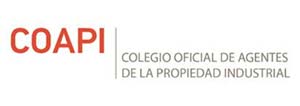
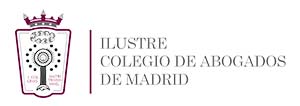
WE ARE ACCREDITED AGENTS FOR:
Contact us
If you have any doubts or would like to receive further information, you can contact us at:
alvamark.w@alvamark.com
91 576 33 34 (Fax)



